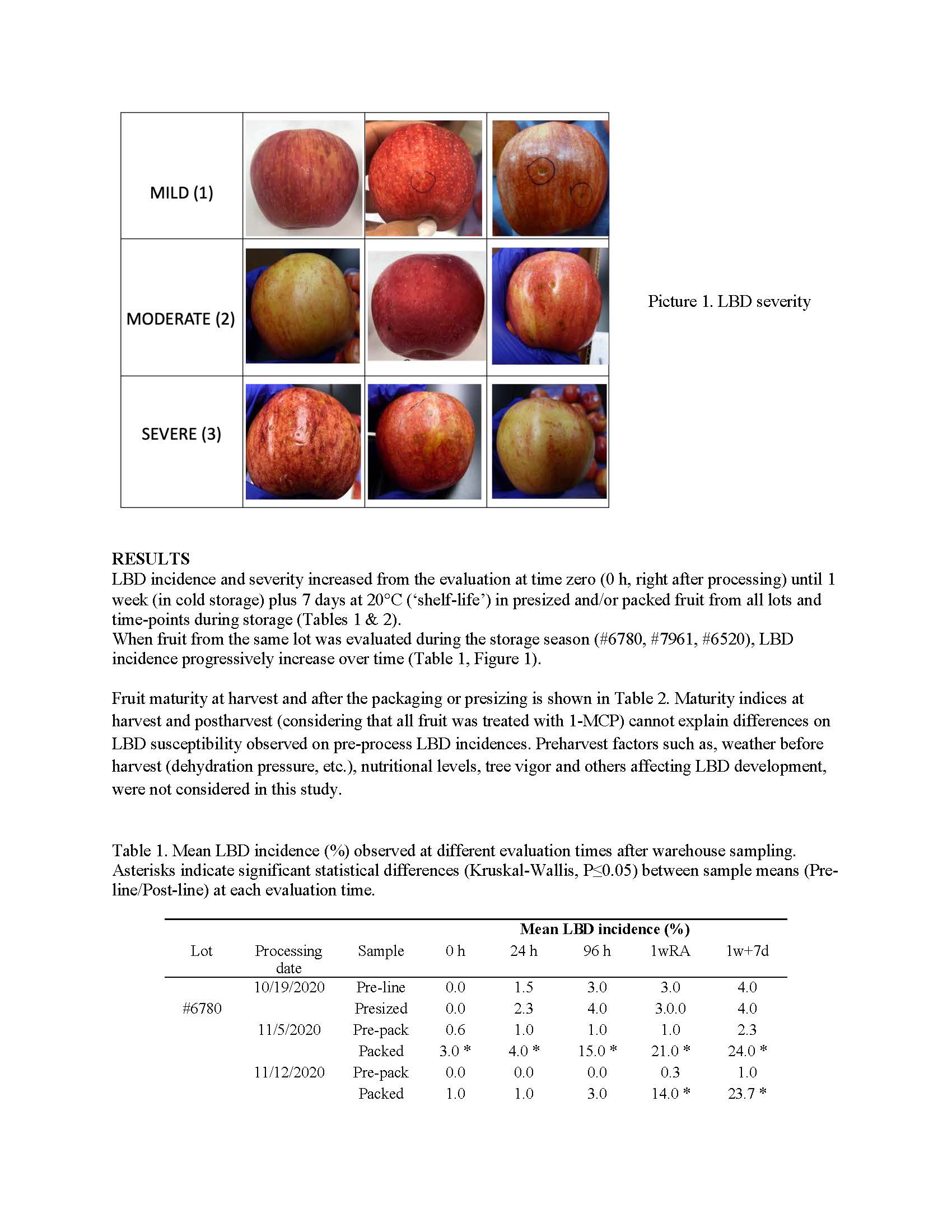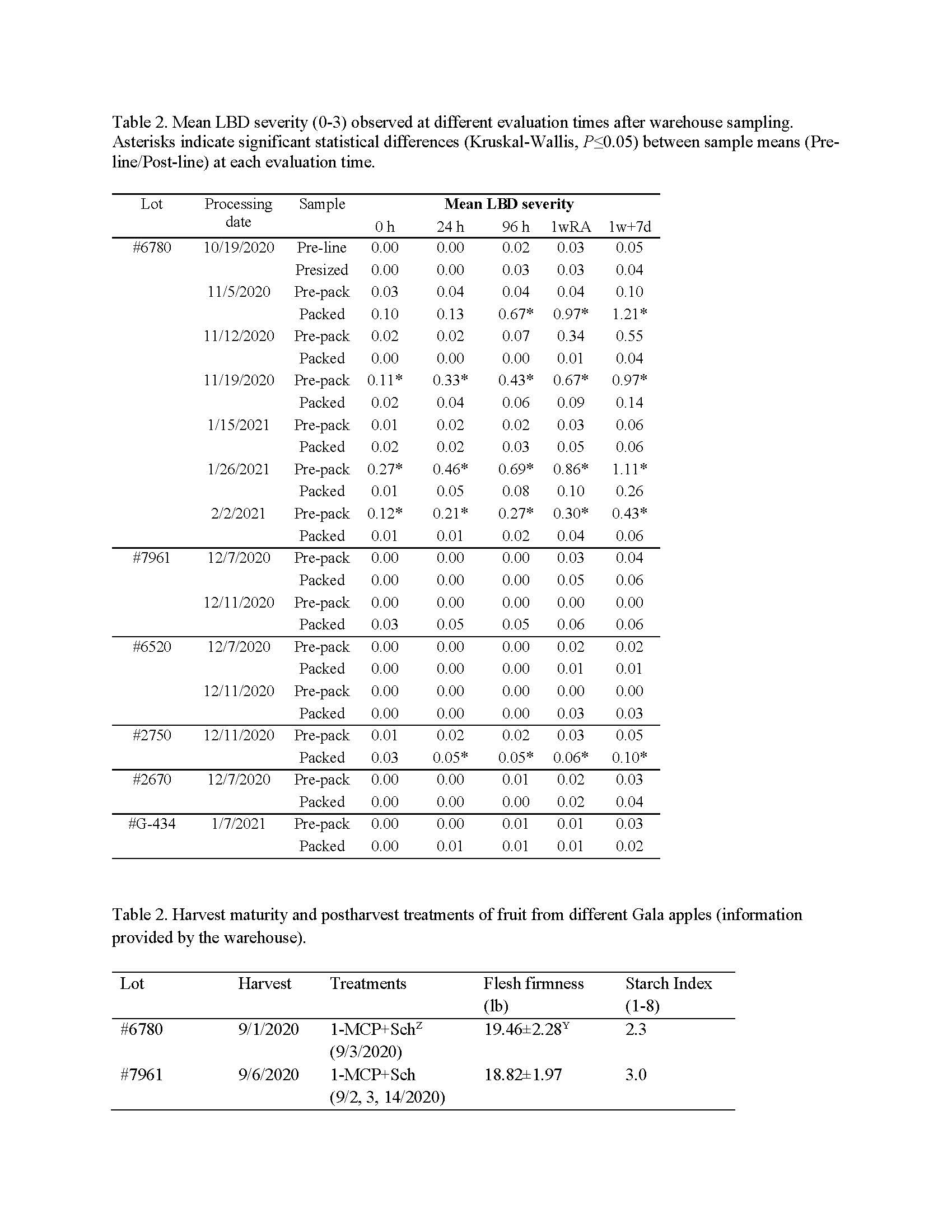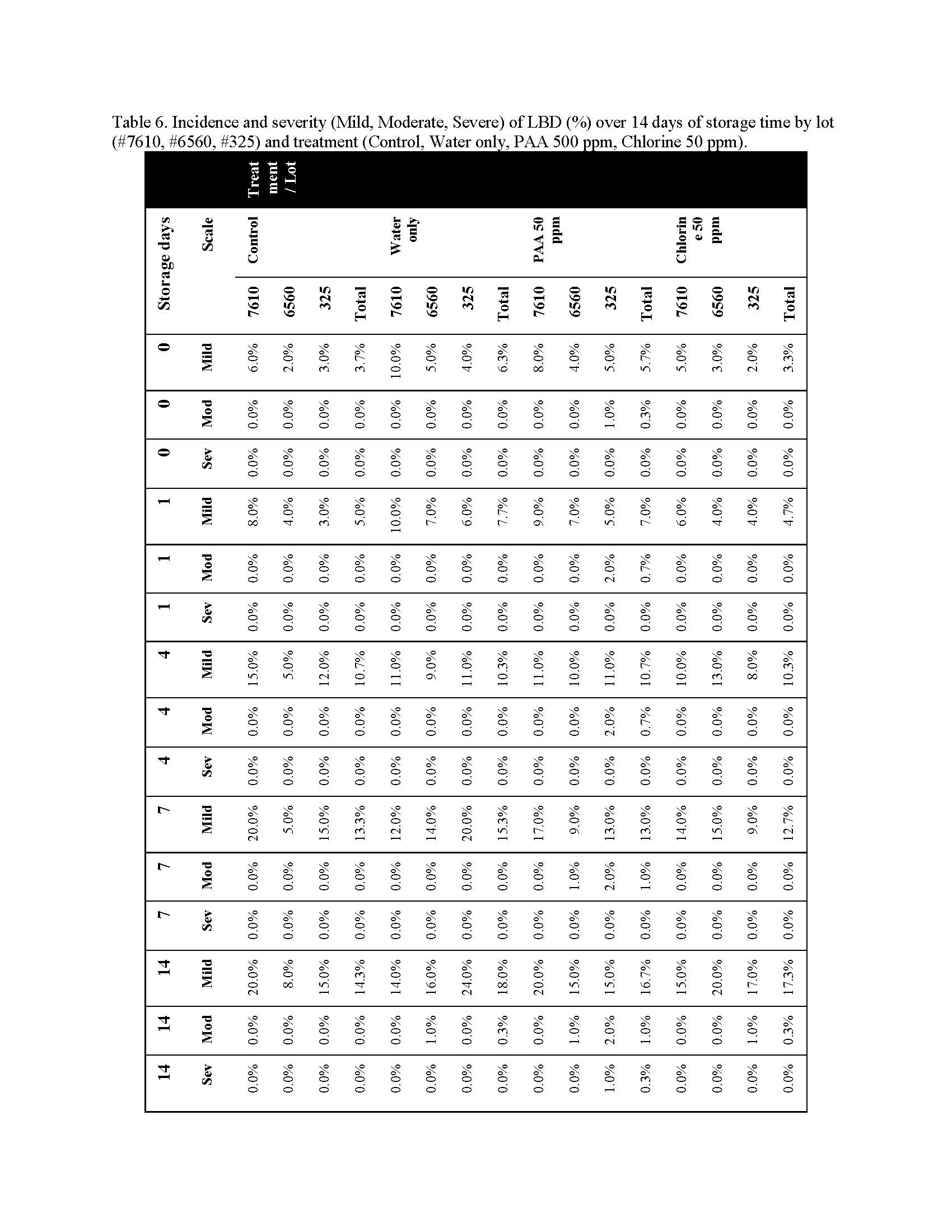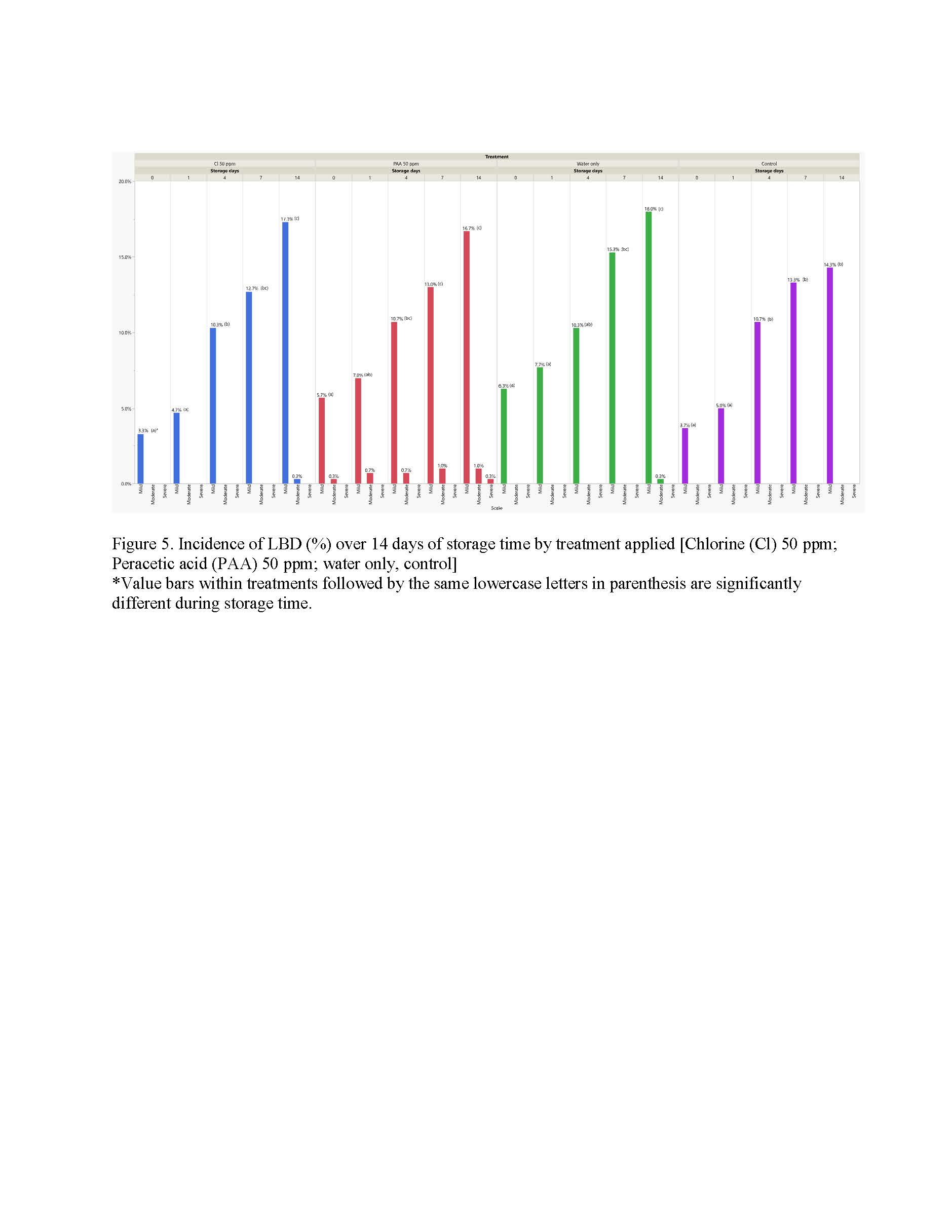Effect of dump tank composition on lenticel breakdown disorder
Author: Carolina A. Torres
Published: 2023
Summary: Lenticel breakdown (LBD) is an important physiological disorder on apples when growing in dry and hot environments. It appears mostly after fruit has been processed (packed and/or presized). Although it is of multi-factorial origin, processing conditions have a major influence on its development. The objective of this work was to assess the effect of water chemistry (carbohydrate, metals and minerals content, pH, ORP, conductivity, temperature, turbidity, COD, free chlorine) during processing on LBD development in commercial fruit lots throughout the storage period. Five different lots of Gala apple were sampled pre and post packaging/processing, along with water samples taken from different sections of the line (presizer, confection line: dump tanks, flumes) at the same time. Fruit from all lots developed LBD symptoms after processing, but only the most susceptible one’s pre-processing. Symptoms started to appear 24 h after it and they continued to increase in number of fruit affected and severity until 1 week in air storage plus 7 days at 68F. Phosphorus accumulation in the water was positively correlated with high incidences of LBD. Calcium, Boron and Potassium may also be playing a role in disorder’s expression. High free chlorine was not correlated with LBD development. Neither chlorine (50ppm) or peracetic acid (PAA, 50ppm) solutions applied to susceptible fruit lots increased LBD incidence or severity.
Keywords:












